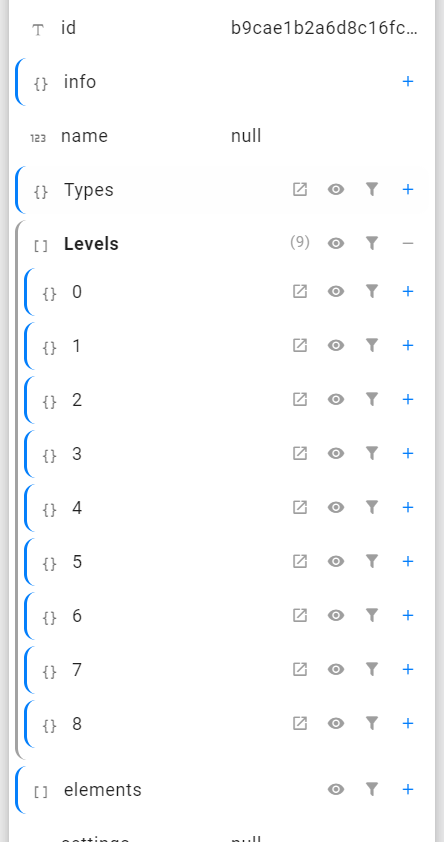There are two possible answers here.
Where a commit has been made of Project Information and Including Levels, you can retrieve the levels of the project exactly in as your example code:
The web view will show them up as distinct elements in an array:
Getting levels used in a commit is a little more complicated… If you want to retrieve the Levels from a commit of objects, no query object can isolate those elements. Because the query filter works on a list of child objects, and the Levels are referenced as the properties of an object, the previous example doesn’t work … as you have discovered.
However, what can be done is a query on the commit to only return objects that have a level as a property .
"myQuery":[
{
"field": "level.speckle_type",
"value": "Objects.BuiltElements.Level:Objects.BuiltElements.Revit.RevitLevel",
"operator": "="
}
]
This certainly filters out any object in the commit that doesn’t have a level property which is in turn not Objects.BuiltElements.Level:Objects.BuiltElements.Revit.RevitLevel. However in truth, so would
"myQuery":[
{
"field": "level.speckle_type",
"value": "Susan's awesome level object",
"operator": "!="
}
]
This validates the level.speckle_type field being present and will omit objects without a level property.
While that will return a lot of redundancy, your own code can then filter the data prop, extract what information about the Level you wish and dedupe.
e.g (python),
# Load the JSON data into a Python object
data = json.loads(json_data) # Where json_data is the graphql result
# Extract the levels from the data
levels = [obj['data']['level'] for obj in data['objects']]
# De-duplicate the levels
unique_levels = [dict(t) for t in set(tuple(level.items()) for level in levels)]
or js
let data = /* Result from query */
let levels = data.objects.map(obj => obj.data.level);
// De-duplicate the levels
let uniqueLevels = Array.from(new Set(levels.map(JSON.stringify))).map(JSON.parse);
A c# example would probably be the methodology of your choice, Linq?, but that should be enough.


